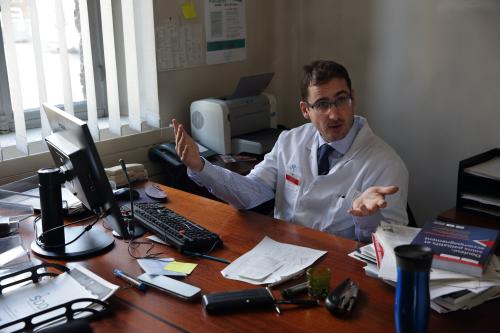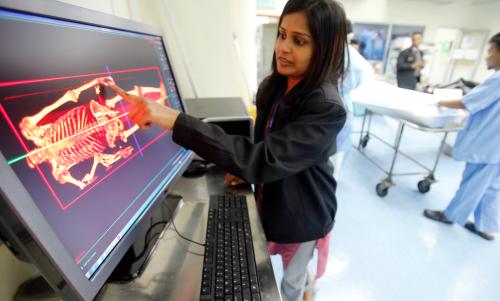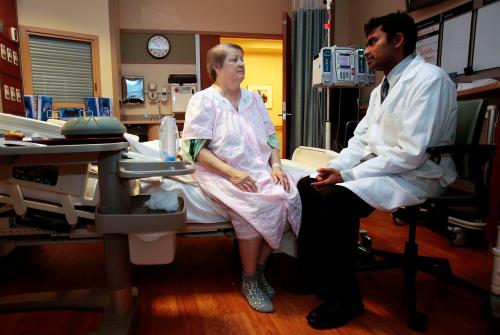Department of Veterans Affairs (VA) is finalizing the negotiations for a multi-billion-dollar deal with Cerner to replace its electronic health record (EHR) system. VA has justified this deal as a major step towards interoperability and information exchange, especially now that the Department of Defense (DOD) recently purchased the same software. While I commend VA for its appreciation of the value of interoperability and for taking major steps to achieve it, I believe that VA could have chosen different strategies with lower costs and a much higher chance of success.
Federal IT Projects’ worrisome record
According to The Standish Group’s report, from 2003 to 2012 only 6.4 percent of federal IT projects with $10 million or more in labor costs succeeded. There are many different reasons for such lackluster performance. Most importantly, what a 2006 Defense Acquisition Performance Assessment report describes as government’s “conspiracy of hope” understates a program’s costs, risks, and technical readiness, leading them to exceed initial estimates. As I have argued previously, legacy systems, large number of stakeholders, lack of business incentives, and outdated project management approaches also cause large IT projects to miss their target delivery date and budget.
The VA’s EHR project is similar to other government IT projects, but judging from this history, the VA project is also very likely to fail. In addition to the usual causes of failure, the VA adds an extra layer of complexity that increases the odds of failure: its personnel show an immense resistance to change. Year after year, VA’s legacy EHR system, VistA, has been ranked amongst the best EHR system by physicians. VA that takes pride in its EHR system and its physicians and nurses have never used another software before. I imagine a large number of those physicians who think VistA is the best EHR system available will have some difficulty adjusting to an unfamiliar system.
SUCCESS against all odds?
Even if a miracle happens and VA finishes this project within budget and on time, VA physicians will be disappointed to realize that even when technical problems of interoperability are solved, DOD will not have much data to share with them.
As I had predicted, DOD is struggling with challenges similar to what VA can expect with its EHR implementation. Assuming that a second miracle happens and DOD successfully implements its EHR, VA still will not be able to receive all the medical records of a large portion of DOD personnel because they receive their health care services from providers outside of DOD’s system. Unless those providers can exchange their medical data, DOD’s EHR will not have much data in it to share with VA.
The Path forward
Given the publicity surrounding this EHR project, it is very unlikely that VA abandons this deal. After many years of trials and errors, the health IT industry has finally realized that patient-mediated exchange approaches are more likely to succeed. This new approach brings patients to the center of the exchange system and allows them to collect, manage, and distribute their own medical records.
Apple’s health app is the most recent example of such an approach in which patients can receive their medical records from participating hospitals into their mobile phones and then share those records with other providers as they wish. At the Healthcare Information and Management Systems Society annual meeting, Centers for Medicare and Medicaid Services Administrator Seema Verma enthusiastically announced rolling out new initiatives to enable patients’ access and management of health records. Interestingly, VA was the pioneer of patient-mediated exchange solutions: their Blue Button technology allows consumers to access a single, downloadable file with their available health data. It is disappointing to see VA adopting outdated solutions while the rest of the industry is finally implementing the exchange solutions invented by VA many years ago.










Commentary
Department of Veterans Affairs’ $10 billion electronic health records system faces long odds
March 15, 2018